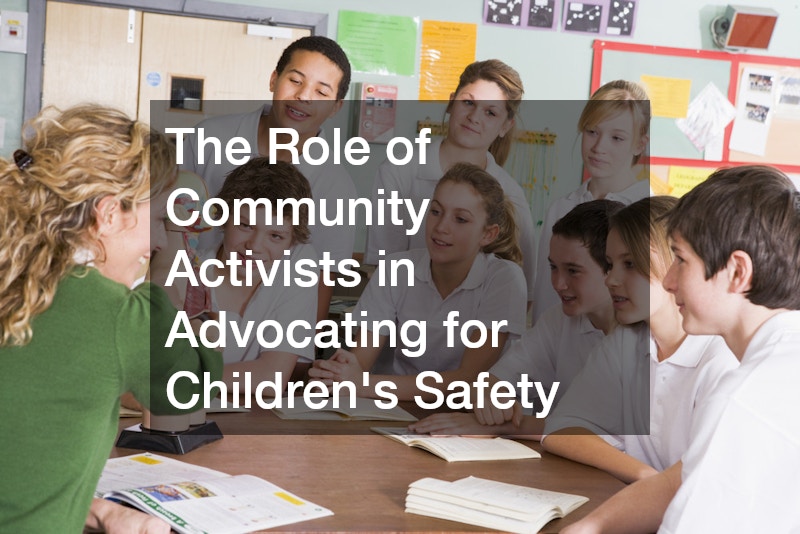
In the quest to create a safe world for children, many career paths offer the opportunity to make a significant impact. From those who directly interact with children daily with birthday balloons and medical support to those working behind the scenes, each plays a crucial role in creating safe environments for children. This article explores various jobs that contribute to children’s safety and welfare, addressing common concerns and frequently asked questions regarding these career opportunities.
What Role Do Child Protection Officers Play in Ensuring Safety?
Overview of Responsibilities
Child protection officers play a vital role in creating a safe world for children by investigating cases of abuse and neglect. They work closely with families to ensure that children are safeguarded in environments that allow them to thrive. Their duties are multifaceted, ranging from assessing risks to implementing safety plans, with each action aimed at protecting the child’s welfare.
Skills and Qualifications Required
To effectively serve as a child protection officer, individuals must possess a strong understanding of child psychology and the legal frameworks related to child welfare. Often, they are required to have backgrounds in social work or psychology, with experience in handling sensitive situations. Crucial skills include empathy, resilience, and the ability to remain calm under pressure, similar to those required of a skilled therapist.
Impact on Children’s Lives
Child protection officers profoundly influence the survival and quality of life for at-risk children. By stepping in at critical junctures, they prevent potentially harmful situations, guiding families towards healthy environments. Their work ensures that the safe world we envision for children is not just an ideal but a reality achieved through diligent effort and advocacy.
How Do Educators Contribute to Creating a Safe Environment?
Building a Supportive Classroom
Educators are fundamental in establishing classrooms that serve as havens of safety and growth for children. Beyond academic instruction, they foster inclusive environments where students feel respected and valued. Offering multi-language classes in Singapore, for example, not only enhances learning but promotes diversity and understanding among students.
Implementing Safety Protocols
Teachers are also responsible for implementing safety protocols within the school environment. These measures protect children from potential hazards and provide a framework for how to respond during emergencies. Such proactive measures help maintain a consistently safe world for students during their developmental years.
Educating About Safety
Educators play a crucial role in teaching children about personal safety and responsibility. They integrate safety lessons into regular curricula, preparing children to protect themselves in various situations. This education is vital as it empowers children with knowledge, contributing to an overall safer world.

What Influence Do Pediatric Healthcare Professionals Have on Child Safety?
Holistic Health Approaches
Pediatric healthcare professionals, including pediatricians and family dentists, contribute significantly to a child’s overall safety by focusing on holistic health approaches. Through regular check-ups, pediatricians can spot potential health issues that may otherwise go unnoticed. Working together with family dental practitioners, they ensure comprehensive care that addresses both immediate and long-term health concerns.
Preventive Healthcare Measures
The routine and preventive measures provided by pediatricians are pivotal in safeguarding children’s health. Early vaccination and screenings are integral activities that prevent the spread of diseases, fundamentally supporting a safe world for children. Additionally, advice on nutrition and physical health aids in averting future ailments, ensuring long-term safety.
Role in Mental Well-being
Mental health is equally emphasized by pediatric healthcare providers, who often collaborate with therapists to offer comprehensive care. They recognize and address mental health issues such as anxiety and stress, providing essential referrals to neurological rehab if necessary. These efforts contribute to fostering secure and supportive environments that prioritize mental well-being.
How Can Social Workers Impact the Safety of Children?
Intervention Strategies
Social workers employ intervention strategies aimed at safeguarding vulnerable children. They assess family dynamics and provide tailored support to ensure a child’s safety within their home environment. Facilitating child support attorney services and guiding families through legal processes underscores their role in creating a protected and supportive network.
Support Services Coordination
Social workers act as coordinators who connect children and their families with necessary support services. Such services can range from temporary housing to access to healthcare facilities, such as neurological rehab. By ensuring these connections, social workers help create a more integrated and safe world for children in need.
Advocacy for Child Protection
Advocacy is a central function of social workers, who strive to influence policies that protect children. They work within communities and governmental systems to ensure children’s voices are heard. Through continued advocacy, social workers champion the creation of a safe world that is not just reactive but preventive.
What Part Do Law Enforcement Officers Play in Child Safety?
Community Outreach Programs
Law enforcement officers contribute to child safety by spearheading community outreach programs. Such programs educate children and their families on safety protocols, ensuring that they are equipped with knowledge applicable in various scenarios. They play a pivotal role in establishing trust within communities, crucial for a safe world.
Investigating Abuse and Neglect
Law enforcement officers are deeply involved in the investigation of abuse and neglect cases. Their training enables them to approach sensitive situations with due diligence, working in collaboration with social services. Such investigative work is instrumental to protecting children and maintaining the safe world everyone aspires to.
Collaborating with Social Services
By partnering with social services, law enforcement helps bridge gaps between immediate safety and long-term welfare. This collaboration is vital in creating multi-faceted safety networks for children in danger. Their combined efforts ensure swift responses and the proper implementation of protective measures to maintain safety standards.

How Can Non-Profit Workers Contribute to a Safe World for Children?
Program Development
Non-profit workers are instrumental in developing programs that address specific safety concerns for children. These programs often aim to educate and provide resources such as access to family dental care or child safety workshops. By addressing these needs, non-profits build the foundations of a safe world where children can flourish.
Community Engagement
Creating a safe world for children often requires the engaged participation of the community. Non-profit workers organize events such as charity fundraisers and bus tours, raising awareness and involving various stakeholders. Through such initiatives, they foster community involvement and contribute to a collective effort to enhance child safety.
Fundraising for Safety Initiatives
Through successful charity fundraisers, non-profit organizations secure funding essential for implementing child safety programs. These funds support initiatives ranging from educational campaigns to the establishment of safety protocols. Effective fundraising helps turn aspirational safe world concepts into tangible actions and solutions.
What is the Role of Child Psychologists in Ensuring Children’s Safety?
Addressing Trauma and Behavioral Issues
Child psychologists specialize in addressing trauma and behavioral issues that impact a child’s safety. Their intervention helps in alleviating the impacts of trauma and promoting healthier coping mechanisms. Through individual or group sessions, they provide therapy that fosters emotional stability, crucial for a safe world.
Providing Counseling and Support
Counseling provided by child psychologists encompasses a broad range of support, including helping children navigate stress or educational challenges. These professionals collaborate with teachers and families, especially during significant transitions like childbirth class, ensuring the child feels secure and supported. Continual guidance aids in stabilizing their environment, contributing to a safer upbringing.
Collaborating with Other Professionals
Collaboration with other child-focused professionals, such as therapists and educators, enhances the comprehensive care extended to children. Child psychologists coordinate with multidisciplinary teams to formulate holistic intervention strategies. This integrative approach fortifies the support network around a child, cementing the layers of a safe world.
How Are Youth Mentors Vital in Creating a Safe World for Children?
Building Trusting Relationships
Youth mentors are pivotal in providing guidance through the development of positive, trusting relationships. They act as role models, offering stability and support in a young person’s life. Such relationships form the bedrock of a safe world for children, fostering trust and open communication.
Providing Guidance and Support
By delivering consistent guidance and support, youth mentors help children navigate personal and academic challenges. Their mentorship provides children with tools essential for personal growth and resilience. This support is foundational in nurturing environments where children feel secure and valued.
Enhancing Social Skills
Mentors play a critical role in the enhancement of social skills, teaching children how to effectively communicate and engage with peers. Through guidance in various settings, mentors help children build confidence and adaptability. These skills are instrumental for their future success and contribute to sustaining a safe world.

What Role Do Child Advocacy Lawyers Play in Promoting Safety?
Legal Representation for Minors
Child advocacy lawyers offer essential legal representation for minors, ensuring the child’s best interests are prioritized in legal proceedings. They work diligently, often in collaboration with child support attorneys, to secure favorable outcomes. This legal protection is vital for maintaining a just and safe world for children.
Policy Reform and Advocacy
By engaging in policy reform, child advocacy lawyers influence systemic changes that enhance protections and rights for children. Their expertise guides the development of legislation that prioritizes child safety and welfare. Such advocacy efforts are crucial in the ongoing quest to create a world where children are safe and empowered.
Educating About Legal Rights
These lawyers also play an essential educational role by informing children and families about their legal rights. Through workshops and educational sessions, they provide resources empowering families to advocate for themselves. This knowledge contributes to a safe world where children and their caregivers are informed and proactive.
Why is Safe Technology Development Important for Children’s Safety?
Designing Child-Friendly Interfaces
Safe technology development focuses on designing interfaces that are user-friendly and age-appropriate for children. Content creators strive to balance engagement with educational value, ensuring that online environments contribute positively to a safe world for young users. Child-focused technology caters to their curiosity while safeguarding their exposure.
Ensuring Data Privacy and Security
Data privacy and security measures are fundamental in technology designed for children. Developers work to create platforms that protect children’s personal information, securing them from cyber threats. This layer of security is crucial in nurturing a safe world for children online, where they can learn and explore without risk.
Developing Educational Content
Technological advances have enabled the creation of educational content that enhances learning at home and in the classroom. This content is often used in conjunction with multi-language classes in Singapore to offer broader educational opportunities. The merging of technology and education is key to preparing children for future challenges in a safe and innovative manner.

The Role of Community Activists in Advocating for Children’s Safety
Mobilizing Grassroots Movements
Community activists are instrumental in mobilizing grassroots movements focused on child safety. They engage local populations to raise awareness about critical issues affecting children, such as abuse, neglect, and access to education. By organizing community forums and workshops, activists create platforms for dialogue, fostering a collective approach to addressing child safety concerns.
Building Coalitions and Partnerships
Effective child safety advocacy often requires collaboration across various sectors. Community activists work to build coalitions with schools, healthcare providers, law enforcement, and social services, creating a comprehensive network dedicated to child welfare. These partnerships enhance resource sharing and streamline efforts, ensuring that communities are equipped to protect their most vulnerable members.
Advocating for Policy Change
Activists play a key role in advocating for policy changes that strengthen protections for children. By influencing local, state, and national policies, they work to implement laws that address systemic issues impacting child safety. Their advocacy ensures that children’s voices are heard in legislative processes, promoting a safer environment for all.
Creating Awareness Campaigns
Awareness campaigns led by community activists are essential in educating the public about child safety issues. Through social media, public speaking events, and community engagement initiatives, they highlight pressing concerns, such as child trafficking or bullying. These campaigns not only inform but also empower community members to take action, fostering a culture of vigilance and support for children’s rights.
Engaging Youth in Advocacy
Community activists also prioritize engaging youth in advocacy efforts. By involving young people in campaigns and initiatives, they cultivate future leaders who are passionate about child safety. Programs that empower youth to share their experiences and advocate for their peers help build resilience and a sense of agency, further contributing to a safe world for children.
Conclusion
Creating a safe world for children is a collective effort requiring diverse roles and specialized skills. By pursuing careers in child protection, education, healthcare, law, and technology, individuals can contribute significantly to the safety and well-being of future generations. Understanding the impact of these jobs is crucial for anyone looking to make a meaningful difference in the lives of children worldwide.



